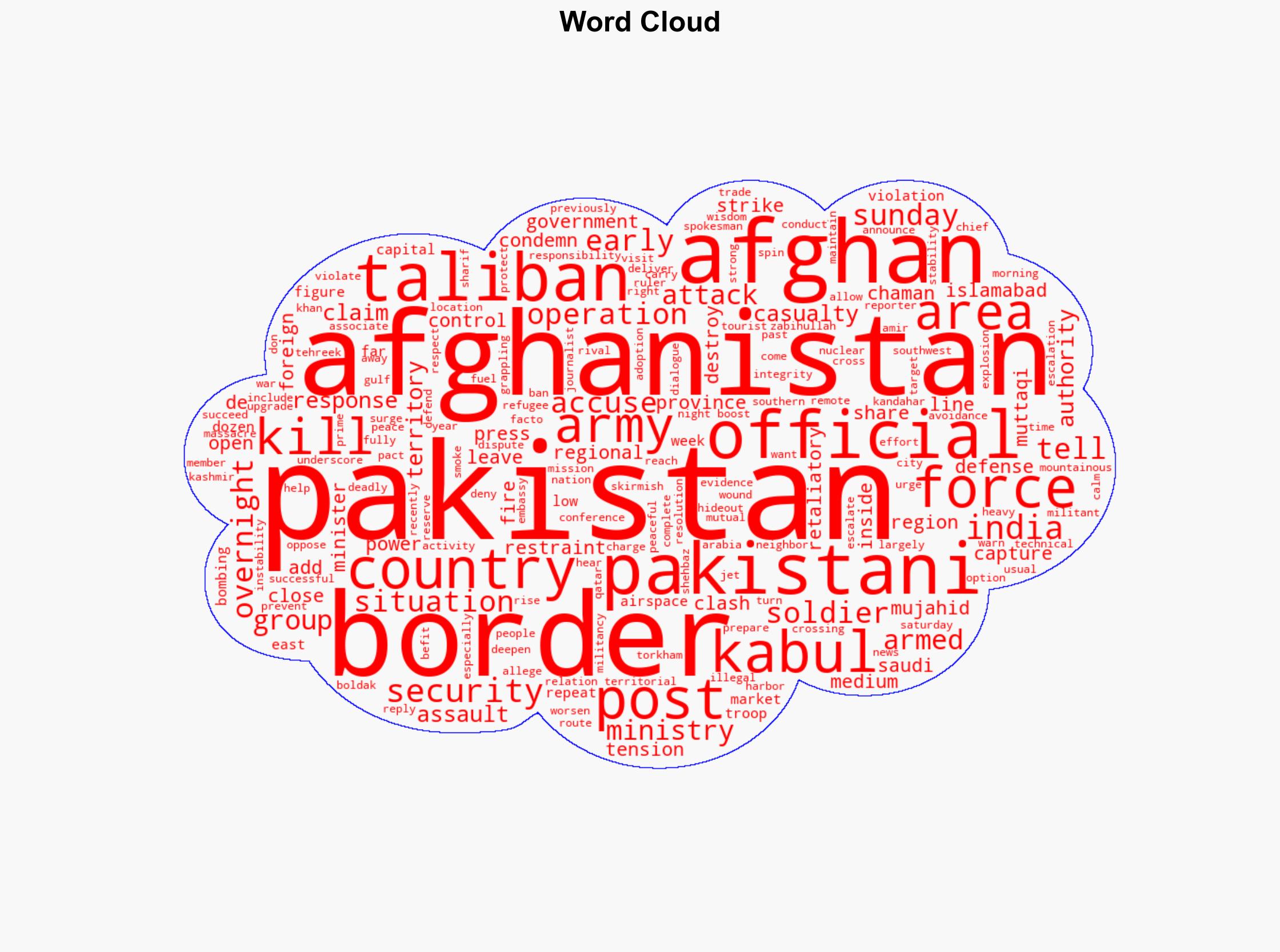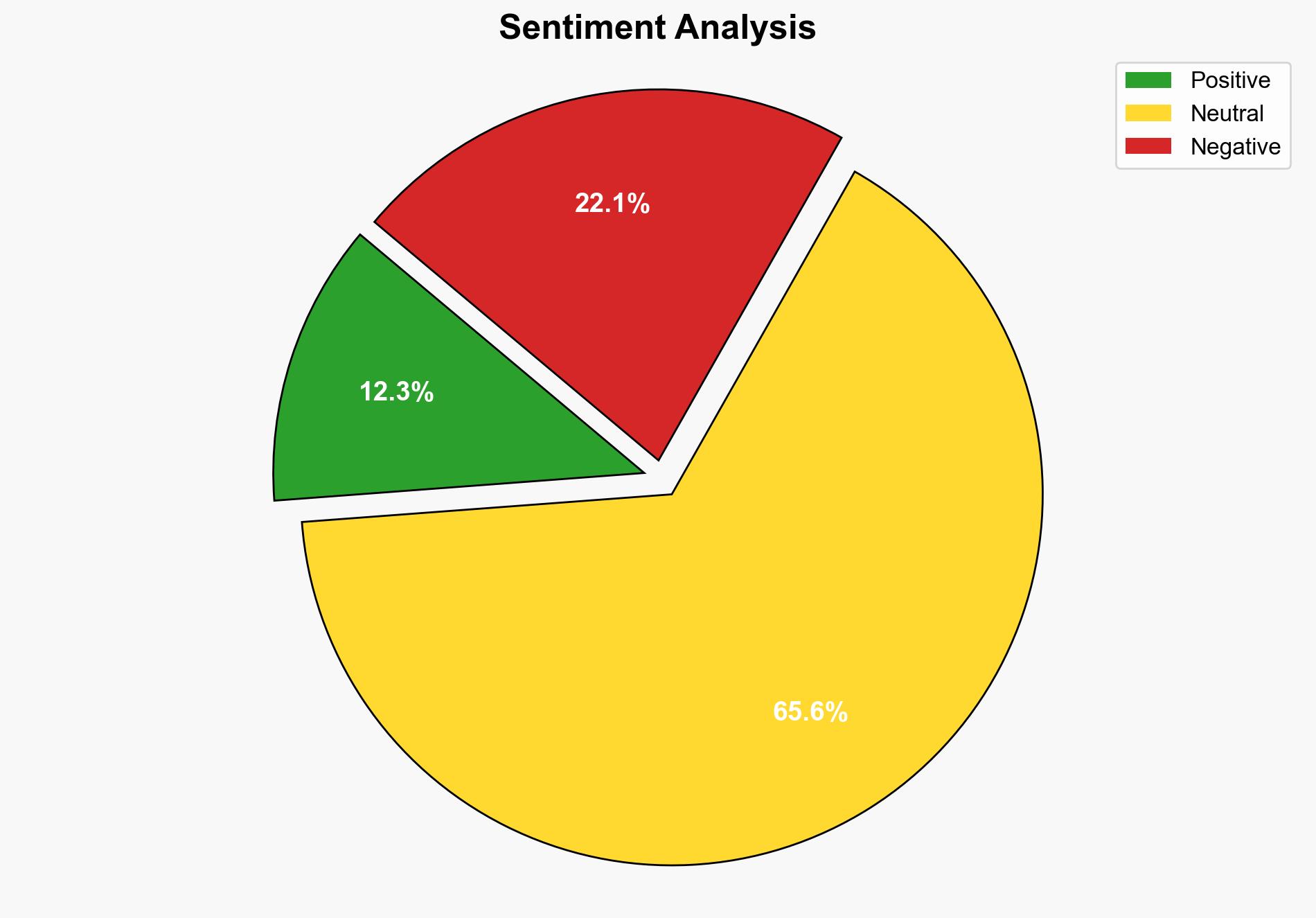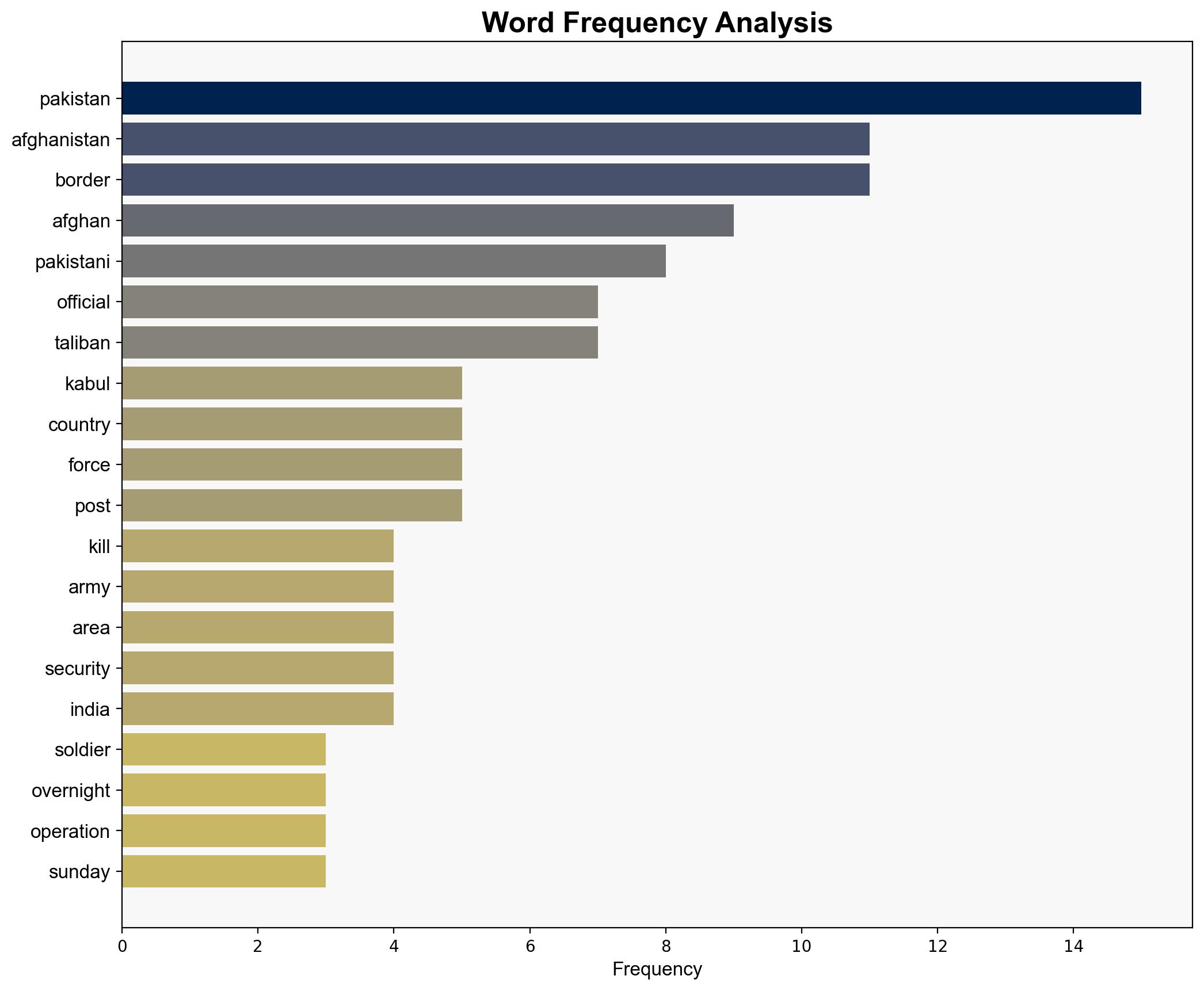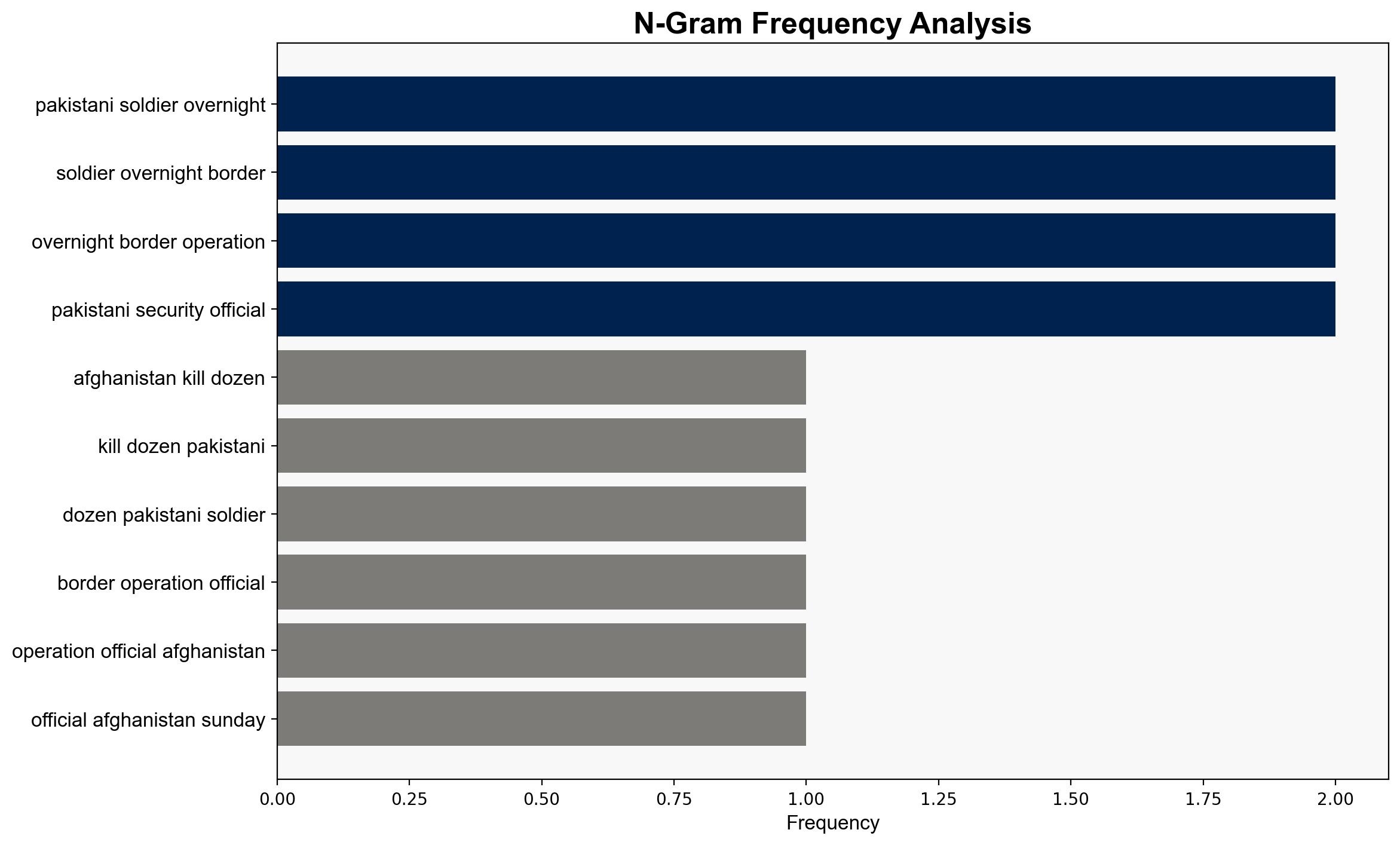Afghanistan kills dozens of Pakistani soldiers at border officials say – CBS News
Published on: 2025-10-12
Intelligence Report: Afghanistan kills dozens of Pakistani soldiers at border officials say – CBS News
1. BLUF (Bottom Line Up Front)
The most supported hypothesis is that the border clash between Afghanistan and Pakistan is primarily driven by retaliatory actions and territorial integrity disputes. The confidence level is moderate due to conflicting reports and unverifiable claims. It is recommended to engage in diplomatic dialogue to de-escalate tensions and prevent further military escalation.
2. Competing Hypotheses
1. **Retaliatory and Territorial Integrity Dispute Hypothesis**: The clash is a result of Afghanistan’s retaliation against perceived Pakistani violations of its airspace and territory, aiming to assert control and deter future incursions.
2. **Proxy Conflict and External Influence Hypothesis**: The incident is part of a broader proxy conflict, potentially involving external actors such as India, aiming to destabilize the region and exploit existing tensions between Afghanistan and Pakistan.
3. Key Assumptions and Red Flags
– **Assumptions**: The first hypothesis assumes that Afghanistan’s actions are purely defensive and reactionary. The second hypothesis assumes significant external influence in the conflict.
– **Red Flags**: Conflicting casualty figures and unverifiable claims from both sides suggest potential exaggeration or misinformation. The lack of independent verification of the destruction of military posts is a critical gap.
– **Cognitive Bias**: Confirmation bias may affect the interpretation of events, with each side potentially framing the narrative to support their strategic objectives.
4. Implications and Strategic Risks
– **Regional Instability**: Continued clashes could destabilize the region, affecting trade routes and increasing refugee flows.
– **Escalation Risks**: Without intervention, there is a risk of escalation into a broader conflict, potentially involving other regional powers.
– **Economic Impact**: Disruption of trade routes like the Torkham crossing could have significant economic repercussions for both countries.
– **Geopolitical Dynamics**: The involvement of external actors could complicate diplomatic resolutions and exacerbate existing rivalries.
5. Recommendations and Outlook
- Initiate diplomatic talks between Afghanistan and Pakistan, possibly mediated by a neutral third party, to address territorial disputes and prevent further military engagements.
- Enhance intelligence-sharing mechanisms to verify claims and reduce misinformation.
- Scenario Projections:
- Best Case: Successful diplomatic resolution leading to a de-escalation of tensions and resumption of normal trade activities.
- Worst Case: Escalation into a prolonged conflict involving regional powers, leading to significant humanitarian and economic crises.
- Most Likely: Continued low-level skirmishes with intermittent diplomatic efforts, maintaining a fragile status quo.
6. Key Individuals and Entities
– Zabihullah Mujahid
– Shehbaz Sharif
– Amir Khan Muttaqi
7. Thematic Tags
national security threats, regional instability, diplomatic relations, territorial disputes




